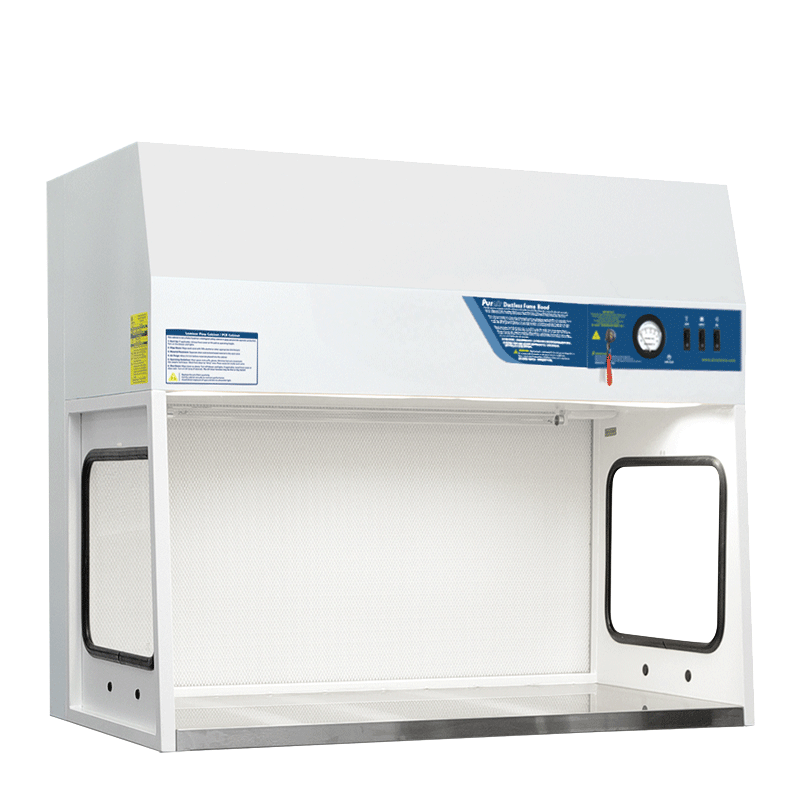Exploring the Common Uses of Laminar Flow Cabinets
A Laboratory Technician’s Guide
In the precise world of laboratory work, maintaining a pristine work environment is non-negotiable. This is where Laminar Flow Cabinets, also known as Laminar Flow Hoods or LFUs (Laminar Flow Units), come into play. These specialised enclosures are designed to protect sensitive samples and processes from contamination, making them an indispensable tool in various scientific fields.
This guide will walk you through the essentials of LFCs, explaining how they work, the different types available, and how to choose the right one for your lab. By the end, you’ll have a solid understanding of why these cabinets are a cornerstone of modern laboratory practice.
Holliday Fielding Hocking Ltd are a UK specialist provider of fume extracted equipment. We have been supplying UK laboratories, industry and education for 5 generations and we know a thing or two about fume cupboards and laminar flow cabinets.
We provide new and refurbished equipment and offer installation and maintenance to hundreds of laboratories throughout the UK. If you are looking for a reliable fume extracted service provider, consider reaching out to us at Holliday Fielding Hocking Ltd.
Understanding Laminar Flow Cabinets
Definition and Purpose
Laminar Flow Cabinets are enclosed workstations that create a sterile environment by directing a continuous flow of HEPA-filtered air across the work area. This unidirectional airflow prevents airborne contaminants like dust, microbes, and other particles from settling on your samples or work materials.
Key Difference from Biosafety Cabinets
While both LFCs and Biosafety Cabinets (BSCs) use HEPA filters, their purposes differ. LFCs primarily protect the work from contamination. BSCs, on the other hand, provide an additional layer of protection for the user, safeguarding them from harmful biological agents.
Laminar Flow: How It Works
The magic of LFCs lies in their simple yet effective mechanism:
- Airflow Patterns: Air is drawn into the cabinet and passed through a pre-filter to remove larger particles.
- HEPA Filtration: The air then passes through a HEPA (High-Efficiency Particulate Air) filter, which traps 99.99% of particles as small as 0.3 microns.
- Sterile Workspace: The filtered air flows in a smooth, unidirectional stream across the work area, creating a sterile environment.
Types of Laminar Flow Cabinets
There are two main types of LFCs, each with its own advantages:
- Horizontal Laminar Flow Cabinets: Air flows horizontally across the work surface. Ideal for work that doesn’t require a lot of vertical space, like media preparation.

- Vertical Laminar Flow Cabinets: Air flows downwards from the top of the cabinet. Suitable for tasks involving taller equipment or when operator protection is needed.

Choosing the Right Laminar Flow Cabinet
Selecting the right LFC boils down to your specific needs:
- Airflow Type: Horizontal or vertical, based on your workspace and application.
- Filter Efficiency: HEPA or ULPA filters for varying levels of protection.
- Size and Design: Choose a size that fits your lab and a design that prioritizes ergonomics.
- Additional Features: Consider options like UV lights for sterilisation or built-in airflow alarms.
Common Applications of Laminar Flow Cabinets
Laminar Flow Cabinets are used across a variety of sectors:
- Medical Laboratories: Protecting samples and cultures from contamination.
- Pharmaceutical Production: Ensuring sterile conditions for drug formulation and testing.
- Electronics Manufacturing: Preventing dust and debris from interfering with delicate components.
- Education and Research: Providing a safe and clean environment for scientific experiments.
Our Conclusion
Laminar Flow Cabinets are essential tools for maintaining a sterile and contaminant-free work environment in laboratories and other industries. By understanding the different types of LFCs and their applications, you can choose the perfect cabinet to ensure the accuracy and reliability of your work.
Interested in enhancing your laboratory’s capabilities? Explore our comprehensive range of high-quality laminar flow cabinets designed to meet the diverse needs of the UK laboratory and education sector.
Frequently Asked Questions
- What is the difference between a laminar flow cabinet and a biosafety cabinet? Laminar flow cabinets protect the work from contamination, while biosafety cabinets protect both the work and the user from harmful biological agents.
- What type of filter is used in a laminar flow cabinet? Laminar flow cabinets typically use HEPA (High-Efficiency Particulate Air) filters to trap 99.99% of particles as small as 0.3 microns.
- How do I choose the right laminar flow cabinet for my lab? Consider the type of work you’ll be doing, the required level of protection, the size of your workspace, and your budget.
Holliday Fielding Hocking Ltd would welcome the opportunity to discuss your laboratory needs. Our range of laminar flow cabinets includes horizontal, vertical and compact laminar flow units. We are also specialists in annual servicing and maintenance of all fume extracted equipment and work with labs, industry and education in the UK, from small stand-alone labs with one or two pieces of equipment to large university campus with thousands of fume cupboards, LEVs, Laminar Flow, PCR units and Class II Biological Safety Cabinets.
HFH are a UK based specialist in West Yorkshire but provide services throughout the whole of the UK. Visit our website to learn more about us and to listen to feedback from clients like you.




